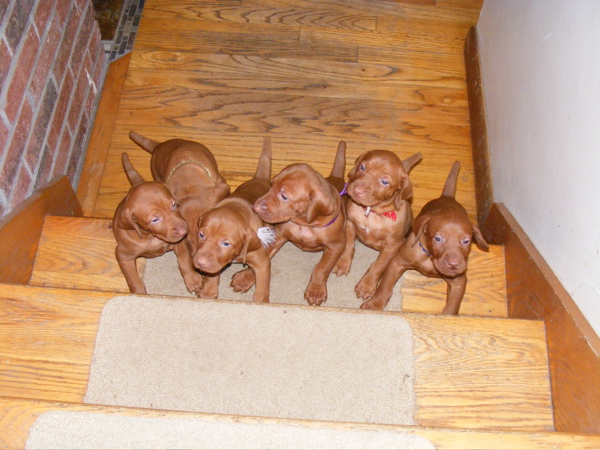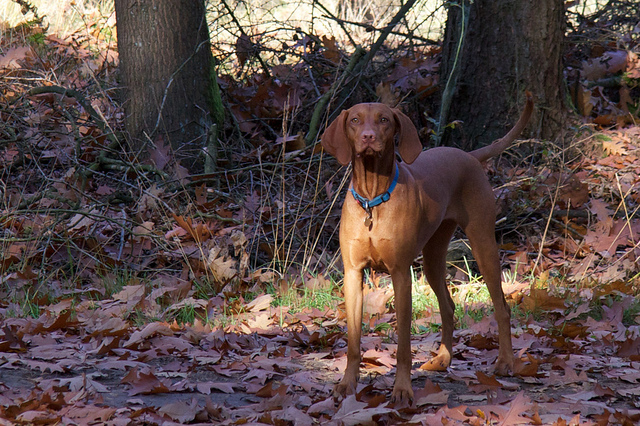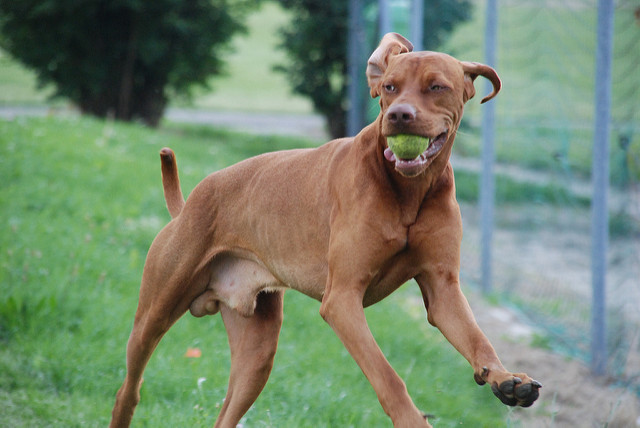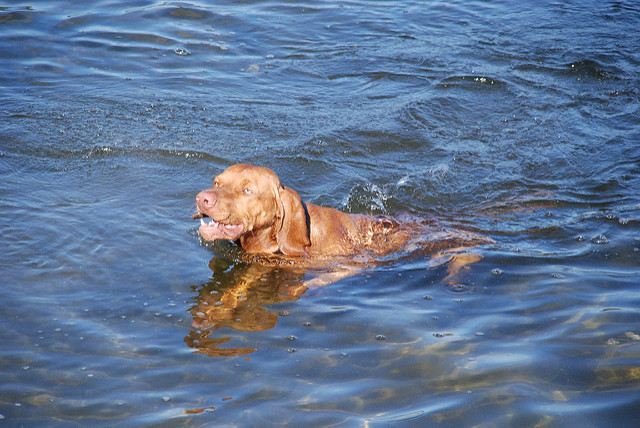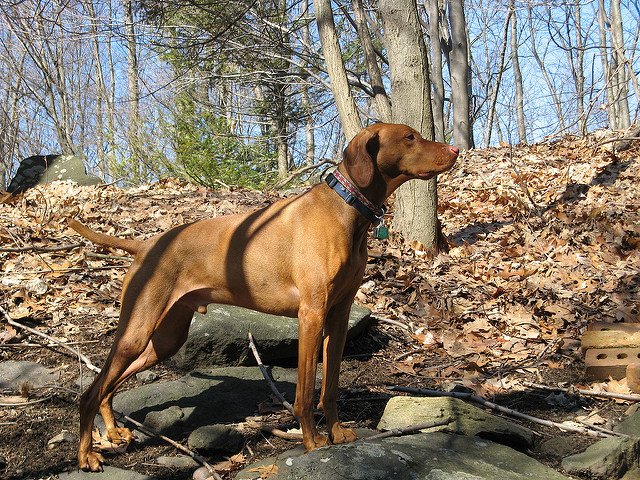Often referred to as the Magyar Vizsla, the Vizsla Korhaar, the Yellow Pointer, and the Hungarian Pointer, the Vizsla breed is an old breed that is thought to have descented from dogs that originally traveled with Magyar individuals throughout Europe over a thousand years ago. While this breed is an elegant, medium-sized pointer in their form, the breed brings together the best trains of retrievers and pointers. This all-purpose hunting dog has the ability to retriever, point, and track animals of all kinds on land or in the water. It’s thought that the name of the breed means responsive and alert, although others argue that it was named after Vizsla, a 12th century settlement.
Origin and History
Originally, Vizslas were used to help flush out game birds by nomadic Magyar hunters, and they were also used to help track and drive game as well. Barons and warlords favored this breed as companions and hunters. Historians believe that the ancestors of this breed may include the Turkish Yellow dog and the Transylvanian Hound, along with additions of some pointer blood along the way.
During the late 1800s, this breed nearly disappeared. A survey of various Hungarian hunting establishments thought that the country only had 12 Vizslas left at that point. Breed enthusiasts began to work hard to save this breed, and the breed was rebuilt at this time. During the world wars, this breed also saw a big decline, but several devotees to the breed would not allowe it to fade away.
It wasn’t until the 1950s that the Vizsla breed came to North America, and in 1954, the American breed club was first organized. Later, in 1969, the American Kennel Club would recognize the breed, adding it to the Stud Book as part of the Sporting Group. It was a Vizsla that was the very first AKC Triple Champion, achieving titles in conformation, obedience, and field.
Appearance
Vizslas are sleek, muscular hunting dogs that have a rust-colored, short, and attractive coat. They have an aristocratic, chiseled head that has just a moderate stop. Their square muzzle is topped with a brown nose, and their teeth come together in a scissors bite. This breed has expressive, alert eyes that complement the color of their beautiful coat. Their ears have round tips and a pendant shape, and they are thin, silky, and long.
The adult male Vizsla should be between 22 and 24 inches high at the shoulder, while the females should be between 21 and 23 inches tall at the shoulder. When in the show ring, going over 1.5 inches in any direction will be disqualified from the ring. Both males and females weigh between 45 and 65 pounds, although there isn’t a weight standard in the ring. It’s only required that the dogs are well proportioned.
Vizsla Temperament
Since Vizslas love being with their owners all the time, they are often called the “Velcro dogs.” This love goes back to the roots of the breed, since they would never go far from their hunters, which resulting in a deep bond between the dog and the owner. These dogs are great family dogs for people who have a very active lifestyle. They are great for hunters, but they also make great jogging, biking, and hiking companions. Since they are easy to train, they are great for families that love being outdoors and active.
It’s important that the Vizsla gets plenty of exercise. They need at least an hour each day to stay in good health and to keep their even temperament. If these dogs don’t get the activity they need, they can become destructive and neurotic. They love organized activities, such as field work, agility, advanced obedience, and tracking.
While Vizslas are usually easy to train, some do have a big stubborn streak. For the best results, this breed should start training early, and trainers need to be assertive and calm throughout training. Although these dogs aren’t dominant, they do often try to test their boundaries. It’s essential to conduct training sessions with treats and praise, although being firm is fine if the dog isn’t listening.
Grooming
Since the Vizsla has a short coat, they don’t require a lot of grooming. You only need to bath them when they get dirty, since their coat doesn’t emit a strong dog odor. To keep their coat looking shiny and healthy, it simply needs to be brushed once a week. Many Vizsla owners use dry shampoo when brushing their dog, or they use a damp cloth to wipe down their dog, which means that baths are nearly unnecessary for this breed.
Owners also need to take the time to check the Vizslas ears each week for any signs of wax build up, irritation, or infection. The ears should be regularly cleansed using a cotton ball and a cleanser that has been approved by a vet. The teeth also need to be brushed weekly and if nails are not naturally worn down, they should be trimmed monthly.
Working Roles
These dogs love to hunt, and they are still used for hunting today. However, for the most part the Vizsla has become a popular pet for active owners.
Health
In most cases, the Vizsla will live to be between 11 and 15 years of age. However, this breed does some medical concerns to be aware of. Some of the health concerns Vizslas are predisposed to may include:
- Sebaceous adenitis
- Ectropion
- Epilepsy
- Progressive retinal atrophy
- Von Willebrand disease
- Entropion
- Allergies
- Hip dysplasia
- Cataracts
- Immune mediated thrombocytopenia
- Hypothyroidism
- Lymphoma
- Lipoma
- Dwarfism
- Tricuspid valve dysplasia
- Mast cell tumors


